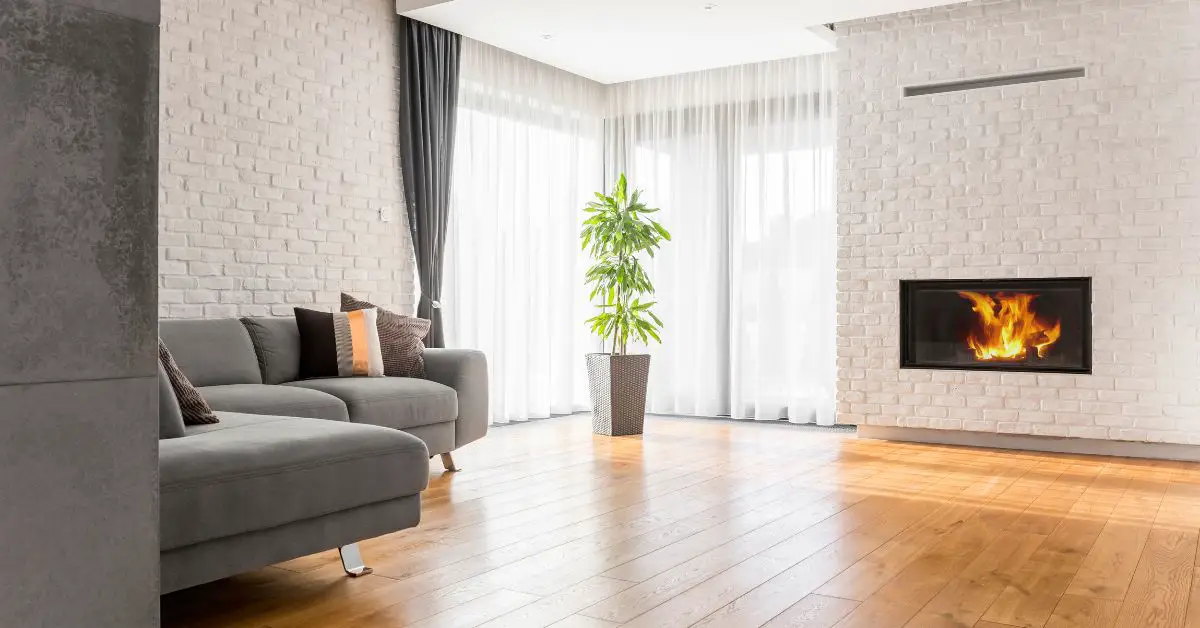Wood floors add timeless beauty and warmth to any space, becoming the hallmark of elegant interiors. However, maintaining their pristine appearance requires careful consideration when choosing cleaning products.
Among the various cleaning agents available, bleach stands out for its potent disinfectant properties. But can you use bleach on wood floors effectively? If yes, how?
Bleach is generally not recommended for use on wood floors, especially hardwood, as it can damage the finish and cause discoloration. Instead, use a gentle cleaner specifically formulated for wood floors to maintain their beauty and durability without risking damage from harsh chemicals.
In this discussion, I’ll explore the process step-by-step and precautions taken to avoid damage.
How Can You Use Bleach On Wood Floors: 10-Steps Guide
Using bleach on wood floors should be approached with caution due to its potential to cause damage. If you decide to proceed, follow these steps:
Step 1: Dilute Bleach
Mix bleach with water in a well-ventilated area. Use a ratio of 1 part bleach to 10 parts water to create a mild bleach solution.
Step 2: Test in Inconspicuous Area
Apply a small amount of the diluted bleach solution to an inconspicuous area of the wood floor. Wait for a few minutes to ensure it doesn’t cause any adverse reactions such as discoloration or damage.
Step 3: Apply to Stain or Disinfect
If the test area shows no adverse effects, apply the diluted bleach solution to the stained or soiled areas of the wood floor using a clean cloth or sponge. Gently scrub the affected areas.
Step 4: Rinse Thoroughly
After applying the bleach solution, rinse the area thoroughly with clean water to remove any residue. Use a damp mop or cloth to ensure all traces of bleach are removed from the wood surface.
Step 5: Dry Completely
Allow the wood floor to air dry completely before walking on it or replacing any furniture. Ensure the area is well-ventilated to speed up the drying process and prevent moisture damage.
Step 6: Monitor for Damage
Inspect the treated area once it’s dry to ensure there’s no damage or discoloration. If any issues are detected, avoid using bleach on the wood floor in the future and consider alternative cleaning methods.
Step 7: Neutralize Residual Bleach
After rinsing, neutralize any residual bleach on the wood floor by applying a solution of water and vinegar. Mix one part vinegar with ten parts water and wipe down the treated area to neutralize the bleach and prevent any lingering chemical effects.
Step 8: Dry and Ventilate
Ensure the area is thoroughly dried after neutralizing the bleach. Open windows or use fans to promote airflow and aid in drying. Proper ventilation helps dissipate any remaining fumes and prevents moisture buildup, which can cause damage to the wood floor.
Step 9: Apply Wood Conditioner (Optional)
If the wood floor appears dry or dull after bleach treatment, consider applying a wood conditioner or oil to restore moisture and enhance the wood’s natural luster. Follow the manufacturer’s instructions for application and drying times.
Step 10: Monitor for Changes
Regularly monitor the treated area for any changes in the wood’s appearance or condition. Keep an eye out for signs of damage, such as warping, discoloration, or deterioration of the finish. If any issues arise, discontinue the use of bleach and seek professional advice for further treatment.
What Caution Should Be Taken To Avoid Damage:
When using bleach on wood floors, several precautions should be taken to avoid damage and ensure safety:
- Test In An Inconspicuous Area:
Before applying bleach to the entire floor, conduct a patch test in a small, inconspicuous area to assess its compatibility with the wood. Apply a small amount of diluted bleach to the test area and wait for at least 24 hours to observe any adverse reactions such as discoloration, warping, or damage to the finish. If there are no negative effects, proceed with caution.
- Dilute Properly:
Always follow the manufacturer’s instructions for diluting bleach. Typically, a safe ratio for wood floor cleaning is 1 part bleach to 10 parts water. Using undiluted bleach can be too harsh and may cause irreversible damage to the wood surface, including discoloration, warping, or deterioration of the finish.
- Wear Protective Gear:
When working with bleach, it’s essential to protect yourself from potential hazards. Wear chemical-resistant gloves, safety goggles, and a face mask to prevent skin, eye, and respiratory irritation from exposure to bleach fumes and splashes.
- Ventilate The Area:
Ensure adequate ventilation in the room where you’re using bleach. Open windows and doors to allow fresh air to circulate and help disperse bleach fumes. Using fans or ventilation systems can further improve airflow and reduce the concentration of bleach vapors in the air, minimizing the risk of respiratory irritation.
- Use Sparingly:
Avoid overusing bleach on wood floors. Limit its application to spot treatments for stubborn stains, mold, or mildew, rather than applying it to the entire floor surface. Excessive or prolonged exposure to bleach can weaken the wood fibers, strip the finish, and cause irreversible damage.
- Neutralize And Rinse:
After applying bleach to the wood floor, it’s crucial to neutralize any residual bleach to prevent ongoing chemical reactions that could lead to damage over time. Prepare a solution of water and vinegar (1 part vinegar to 10 parts water) and use it to rinse the treated area thoroughly. Vinegar helps neutralize bleach and remove any remaining residue from the wood surface.
- Dry Completely:
Allow the wood floor to air dry completely after rinsing. Use towels or a dry mop to absorb excess moisture and speed up the drying process. Ensure the room is well-ventilated to facilitate evaporation and prevent moisture from penetrating the wood fibers, which could lead to swelling, warping, or mold growth.
- Monitor For Damage:
After treating the wood floor with bleach, closely monitor the treated areas for any signs of damage or adverse reactions. Check for changes in color, texture, or sheen, as well as any warping, buckling, or cracking of the wood surface. If you notice any issues, discontinue the use of bleach and consult a professional for guidance on appropriate remediation steps.
Related Questions:
How Much Bleach Do I Use To Clean Wood?
To clean wood with bleach, dilute it properly. For general cleaning, mix 1/2 cup of bleach with 1 gallon of water. Use a soft cloth or sponge dampened with the solution to wipe down the wood surface. For stubborn stains or disinfection, increase the bleach concentration slightly, but never exceed a ratio of 1 part bleach to 10 parts water to avoid damage.
How Do I Make My Hardwood Floors Shine?
To make hardwood floors shine, start by cleaning them thoroughly to remove dirt and grime. Then, apply a hardwood floor polish or wax using a clean microfiber cloth or mop. Follow the product instructions for application and drying. Buff the floors gently with a dry cloth or buffing pad to achieve a glossy shine. Avoid using excessive water or harsh chemicals, as they can dull the finish over time.
Conclusion
While bleach offers potent disinfection, it’s not ideal for all types of wood floors due to potential damage. Preserving your wood floors’ beauty and durability is paramount. Choose gentle cleaners designed for wood to maintain its luster and integrity.
Prioritize cautious testing and proper dilution to safeguard against damage. By adopting these measures, you can ensure your wood floors remain pristine and resilient for years to come. Hope, you now know whether can you use bleach on wood floors or not.


